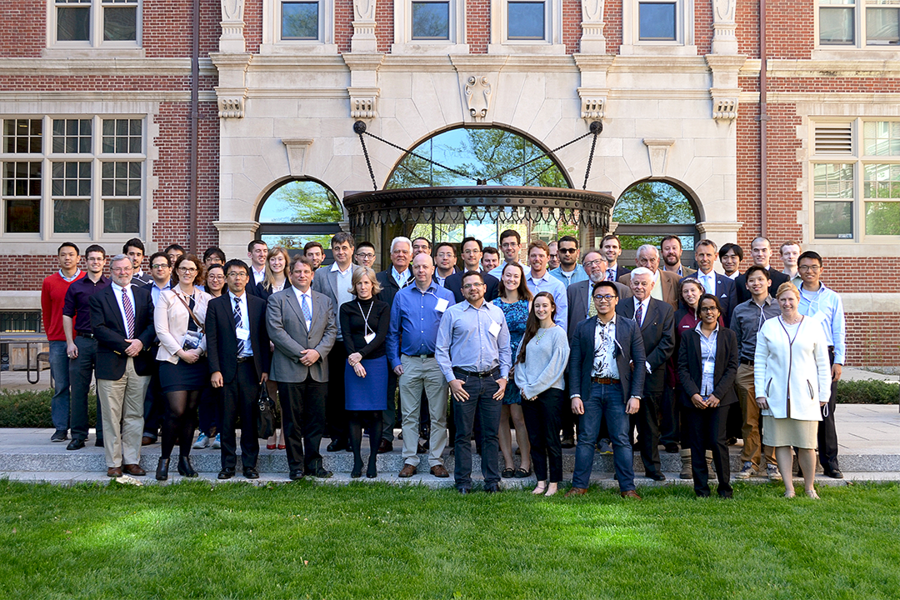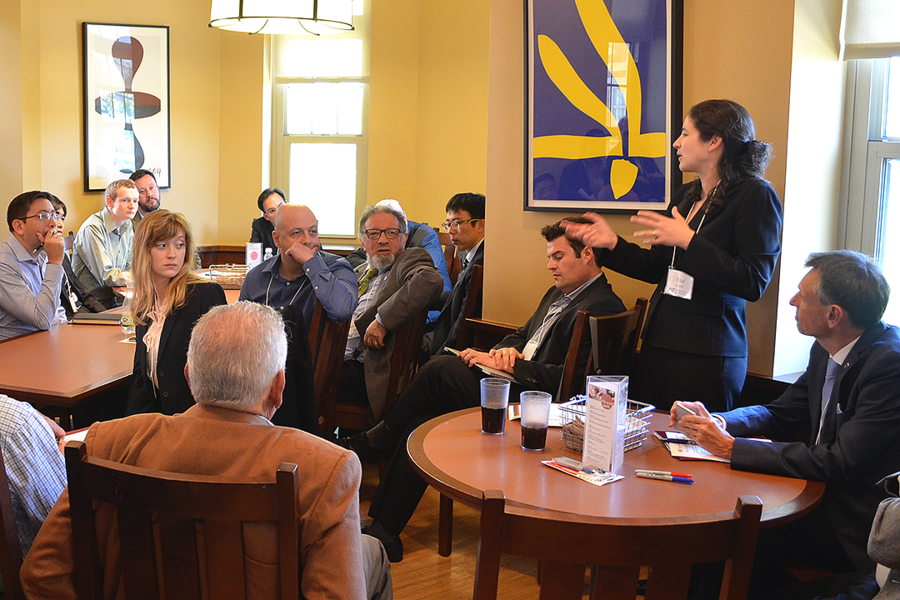Metals and minerals form the base of our society, with diverse applications infiltrating all corners of our lives, including agriculture, infrastructure, transportation and information technology. As populations grow, and demand for metals and minerals rises, enhancing the sustainability of the sector is a goal for many companies, communities and policymakers.
To contribute to this, on May 11-12, MIT launched the Metals and Minerals for the Environment (MME) initiative with its first public symposium. MIT has long been home to research on myriad aspects of metals and minerals, and the MME Symposium serves to crystallize these efforts around the unique environmental and social challenges the sector faces.
Funded by the MIT Environmental Solutions Initiative, with additional support from the Industrial Liaison Program, the MME Symposium hosted industry professionals involved in sustainability, engineering, R&D, and other related topics. The event featured presentations from MIT faculty and industry experts, as well a glimpse into current research with a tour of MIT laboratories and a student-led poster session.
MME’s principal investigator, MIT assistant professor of metallurgy Antoine Allanore, introduced his research around metal extraction by electrolysis, which shows great promise for reducing greenhouse gas emissions and increasing productivity. Co-principal investigator T. Alan Hatton, the Ralph Landau Professor of Chemical Engineering, explained his innovations in carbon capture and waste separations, providing another angle for decreasing the industry’s environmental impacts.
Other speakers suggested additional angles for achieving sustainability goals, such as Maurice F. Strong Career Development Professor Matthew Amengual’s work on the impact of mining on local communities, and professor of biological engineering Bevin P. Engelward’s research on the health impacts of metals. Assistant professor of materials science and engineering Elsa A. Olivetti discussed the potential for higher use of recycled materials and waste byproducts, while John F. Elliott Professor of Materials Chemistry Donald R. Sadoway showed the future of renewable energy battery storage, highly relevant for the remote locations of many mines. Vice President for Open Learning Sanjay Sarma closed out the symposium, providing a vision of how the internet of things can be applied within the metals and minerals sector to monitor safety and increase efficiency.
“This Symposium provided a unique opportunity for MIT researchers to hear directly from the industry what their concerns are, where technologies might be deployed, and what is preventing industry from adopting some sustainability upgrades,” MME program manager Suzanne Greene says.
Allanore hopes that the event will culminate in a raised awareness of work at MIT that could be of immediate use to the industry, and of larger innovations under development that could serve as disruptive technologies to modernize the industry.







